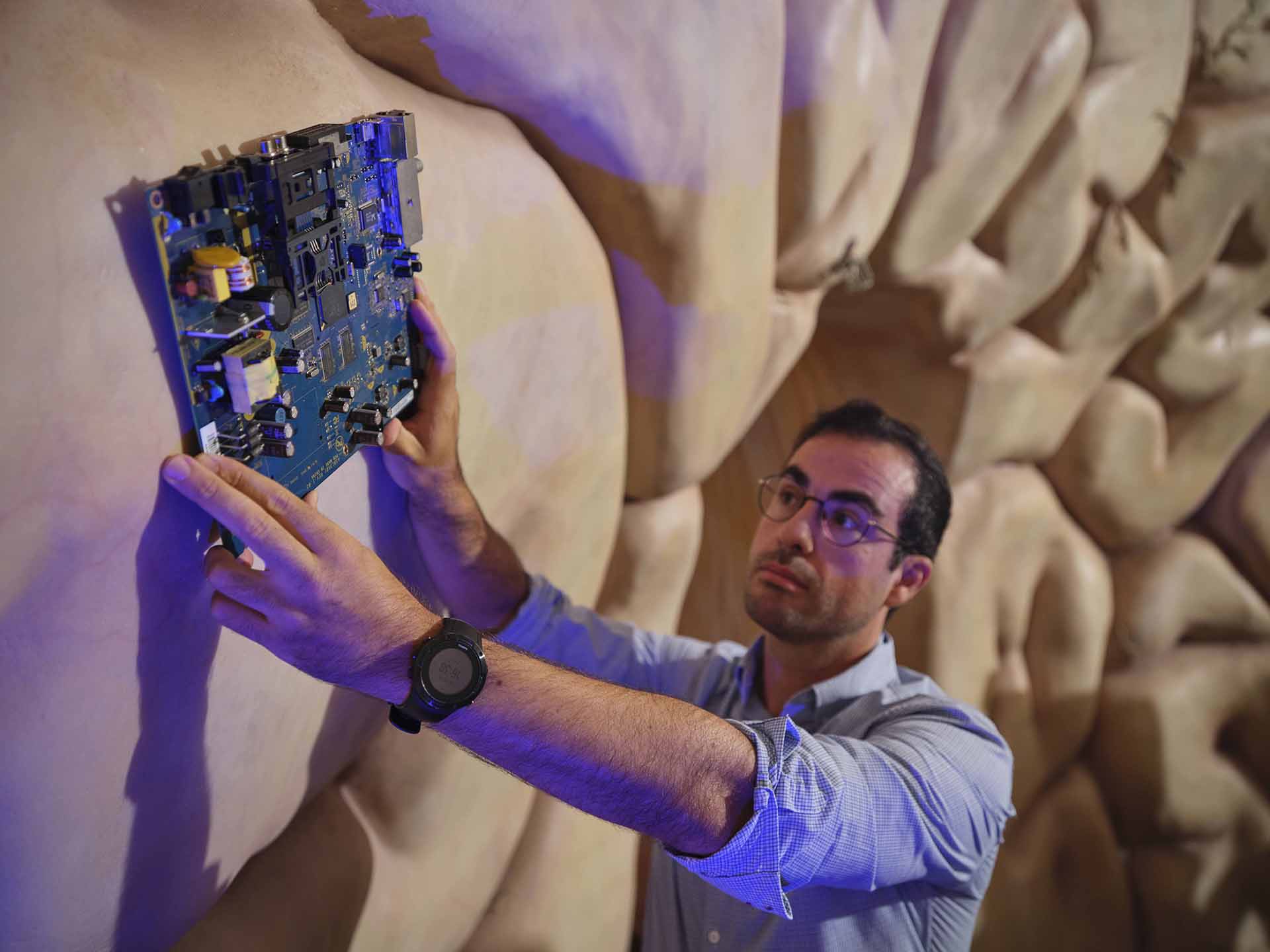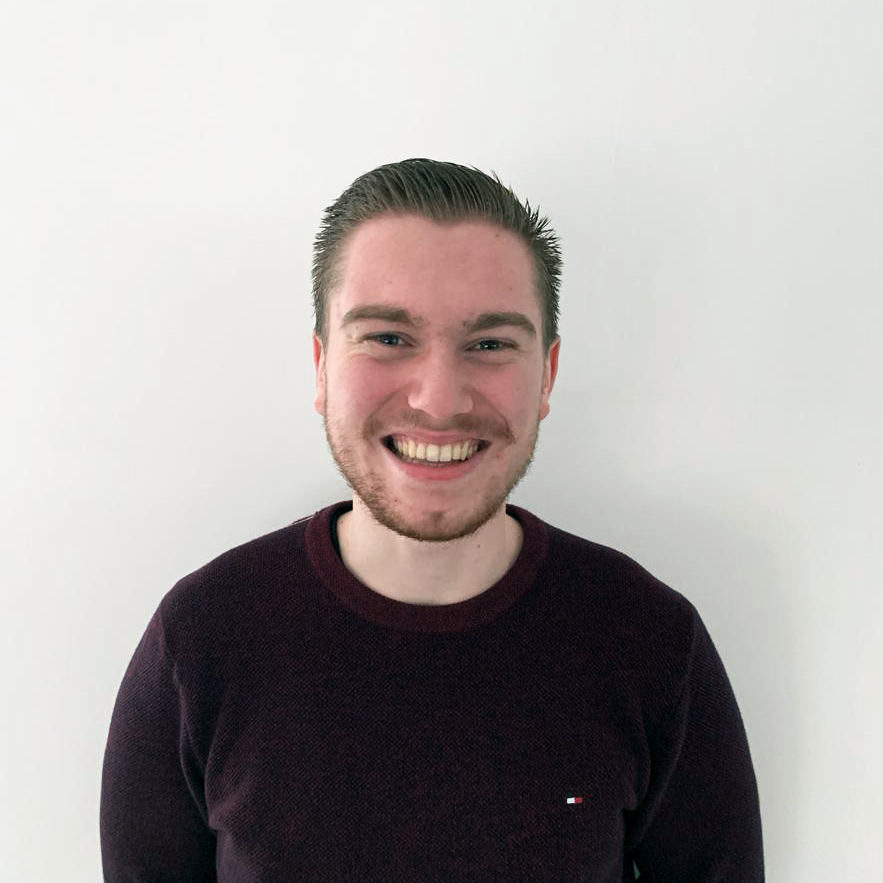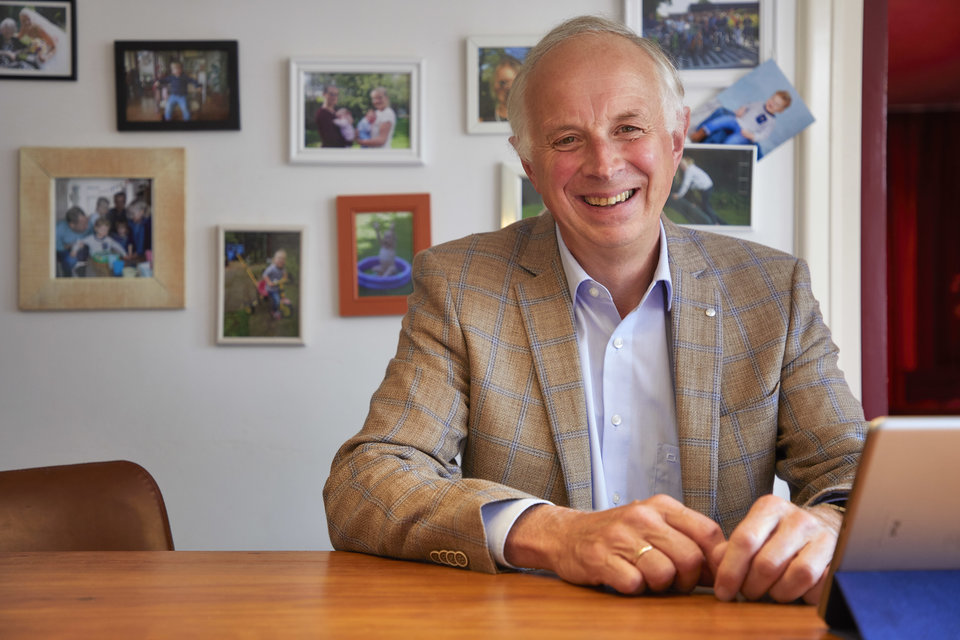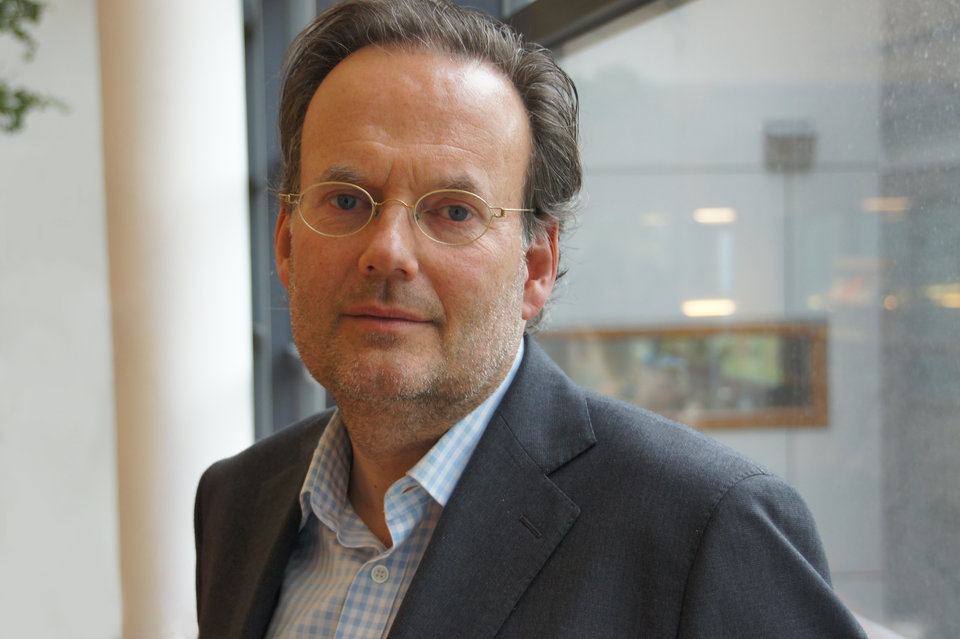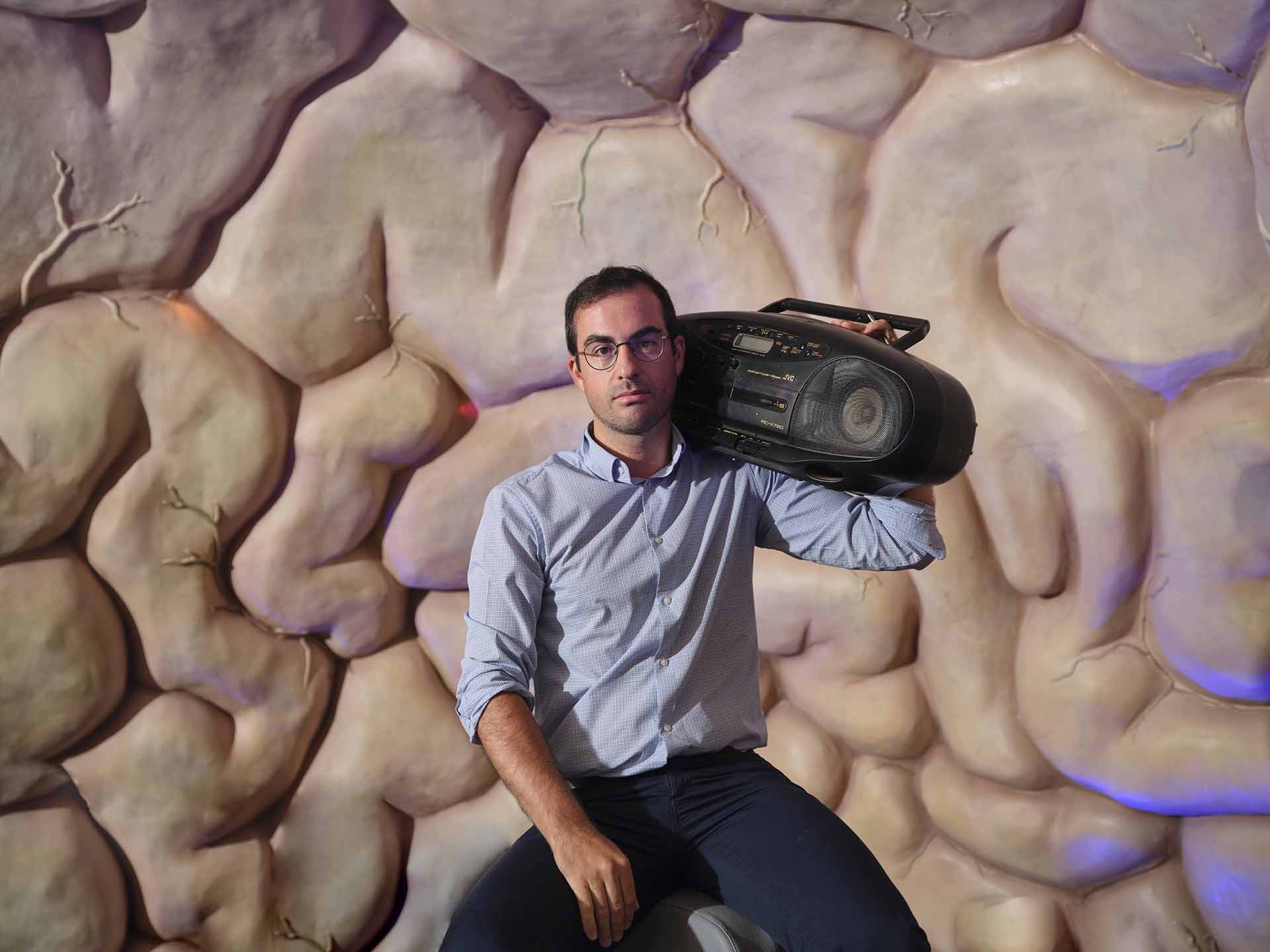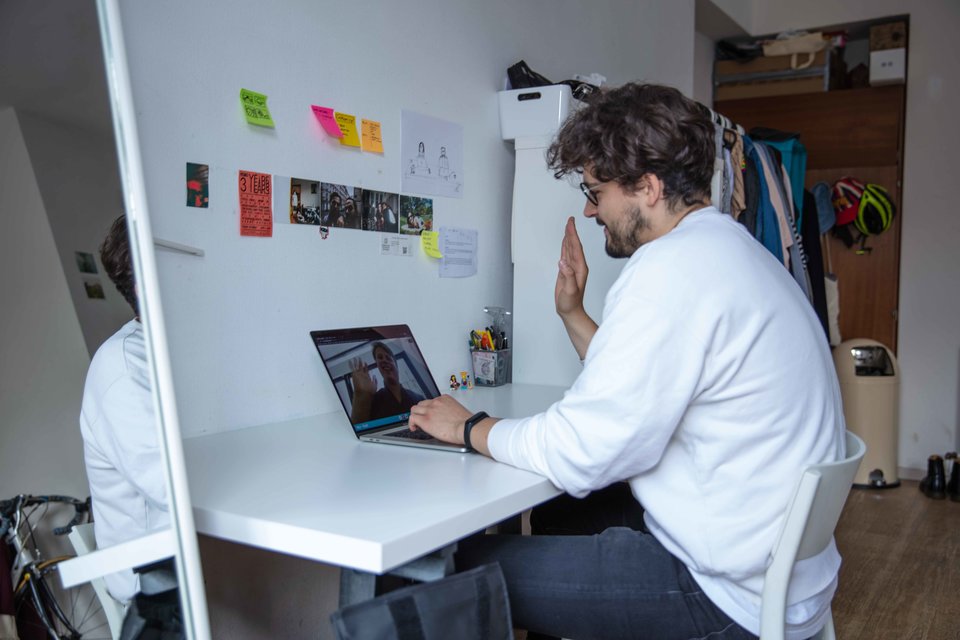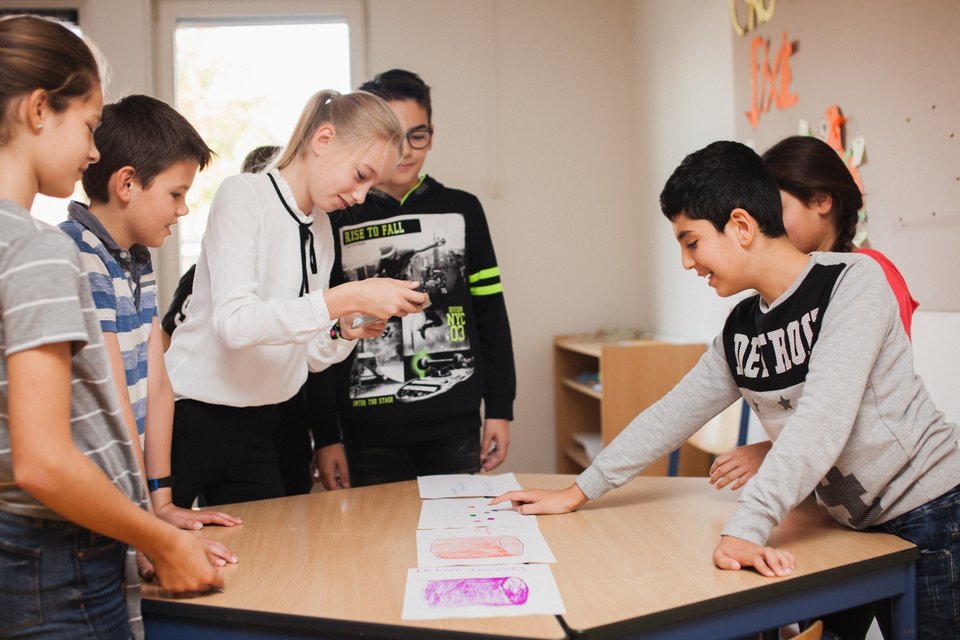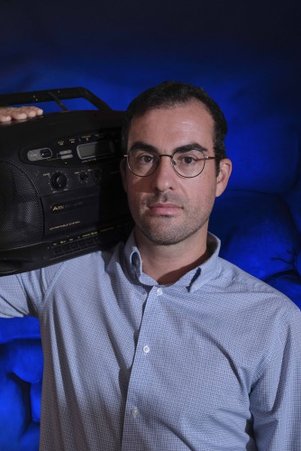Sounds good: treating depression with ultrasound
Physicians are desperate to find new and effective treatment options for chronic pain and depression. Tiago Costa is developing a novel targeted neuro-modulation treatment for depression, using focused ultrasound. His goal is to treat only brain areas that need attention, leaving other parts of the brain undisturbed.
Ever since middle school, Tiago Costa wanted a career that would allow his horizons to expand constantly. He first chose electrical engineering, originally having robotics in mind, but ended up in the USA specialising in ultrasound microchip technology for biological interfaces. After that he joined the Bioelectronics Group at TU Delft.
Costa said he wanted to help build the next generation of electroceuticals (see frame) at TU Delft: “This is where I met neurosurgeon Dirk de Ridder, who told me that depression is badly in need of additional treatment options. Depression is attributable to a network of many brain regions, and I immediately realised it is a perfect match for treatment with focussed ultrasound.”
Stimulating the brain
One in every seven people will develop a major depressive disorder over the course of their life. For many, symptoms improve with psychotherapy or drugs (anti-depressants). For the 30% of people with so-called treatment-resistant depression, there is another option called brain stimulation therapy. Costa: “The best two non-invasive such treatments use electricity or magnets to trigger brain activity. However, they are lacking in resolution, so they stimulate a large part of the brain. It’s kind of accidental that they make something positive happen.”
The invasive alternative uses electrodes implanted deep inside the brain. Costa said that such electrodes have a much more localised effect, but they can only treat a single spot: “Focused ultrasound, once completely developed, should be a one-time and much less invasive procedure, as we only need to penetrate the skull, not the brain. This allows the stimulation of many small volumes of brain, which can be subsequently chosen at will. The treatment can also be adapted to a changing brain.”
Targeted sound
We are all familiar with lenses for focusing light. One example is spectacles that help to form a clear image on the retina. Another is a magnifying glass that allows you to start a campfire by focussing sunlight on a small spot. Focused ultrasound works in a similar way, focussing sound – which can penetrate tissue easily – into a small spot. That spot can be as small as half a millimetre in diameter, stimulating roughly ten to twenty thousand brain cells. It’s about a thousand times fewer cells than those stimulated by conventional state-of-the-art out-of-skull ultrasound.
Ultrasound is typically generated by a transducer that converts electrical energy into a sound wave, travelling in all directions. Costa’s microchips hold many such tiny transducers within a matrix: “By controlling electronically the exact time each transducer fires, I can choose where all these waves collide. Typically, some transducers will fire a bit sooner, because their sound waves must travel a bit further, while others fire somewhat later. We can change everything on the fly, creating arbitrary ‘lenses’ and focussing the sound at chosen locations within the brain.”
Stimulating and reading
Costa said that focussed ultrasound is only part of a solution. “We also need to measure brain signals reliably, and use these to identify patterns that indicate different states of the disease. Only then can we measure if we have steered a beam to the correct location, for a positive impact, or if we need to steer it somewhere else. Then we can fit the treatment to each individual patient.”
The researchers will use EEG to measure the electrical activity of the brain, identifying patterns in these data. Technologies for both reading and stimulation will be integrated into a single device, which will be implanted underneath the skull but on top of the outermost protective layer of the brain (the dura). A second device, outside of the skull, will serve as a wireless transmitter.
Collaboration is essential
Many challenges still lie ahead before this becomes a technological breakthrough, offering a personalized treatment for depression. The challenges are both technical (e.g. miniaturisation, power supply, data compression) and medical (e.g. what brain activity should we aim for, and what is the tissue compatibility?). That’s why the international UPSIDE consortium hosts many disciplines, from bioelectronics to neurosurgery and from brain-machine interfaces to psychiatry.
Costa’s main role in this endeavour is to build best-in-kind chips for the treatment of depression. On the one hand, his multidisciplinary focus means that he cannot be as involved in pure microelectronics research as he would like to be. But he also realises that a wider vision allows him to conceptualise bigger systems, and that creativity is fostered where various disciplines converge.
Electroceuticals
Neurons are the fundamental units of the brain and nervous system. They communicate through bioelectricity – controlling breathing and motion and steering many biological processes. Electroceuticals are wearable, implantable, and injectable biomedical devices that interact with the neurological pathways of the human body – through electricity or other means. They are a new class of therapeutic agents that have the potential to become highly targeted, reversible, and one-stop solutions to lifelong medicine for selected diseases. Electroceuticals have already been shown to be effective in the treatment of certain neurological and auto-immune diseases.
(Much) more than depression
Costa said that the chip might be suitable to treat more than just depression: “These chips are like a multitool, and could potentially treat a large variety of brain diseases.” He also develops chips to study how exactly ultrasound activates neurons at the cellular level. Together with colleagues within his department, Costa has plans to build a small bio-measurement lab, where they can test chips on living tissue such as cells and brain slices.
Costa’s big dream is to contribute to the creation of an entire institute, involving people from electrical engineering, applied sciences, and mechanical or even aerospace engineering, as well as biologists, neuroscientists, and others. Costa: “This institute should have separate labs, but only one canteen and a single location for coffee machines. It’s by spending lots of time together that things happen.” That’s just one way in which Costa keeps pushing the boundaries at the interfaces between disciplines, and expanding his own horizons.

